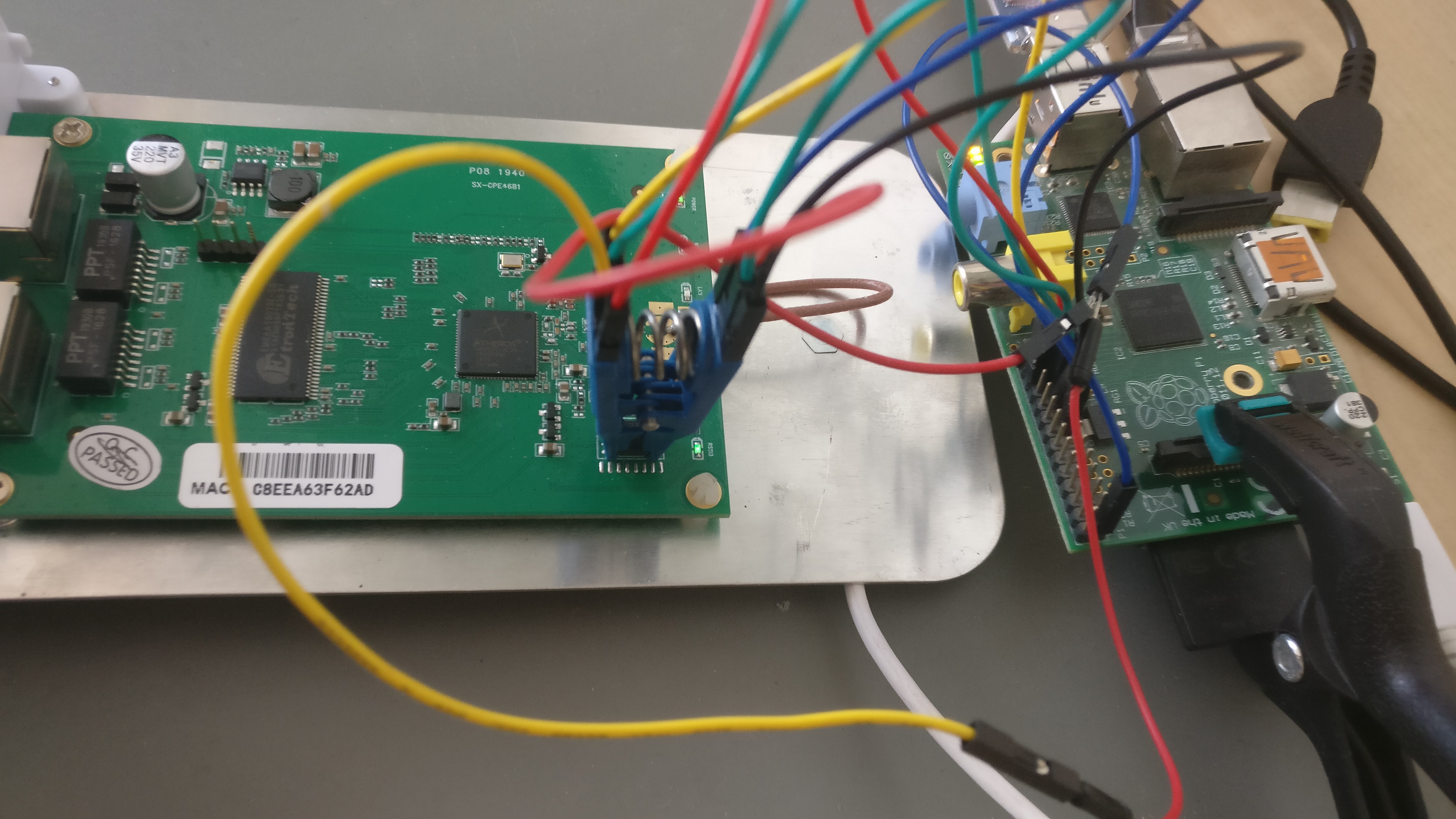| flash | ||
| images | ||
| openwrt/target/linux/ath79 | ||
| Readme.md | ||
Porting OpenWRT to a board with a supported SoC
Intro
Recently, some network devices caught my attention both on Aliexpress and Alibaba. Specifically, I found some interesting outdoor equipment for a very low price, ranging between 10-25$.
https://it.aliexpress.com/item/32964460654.html https://it.aliexpress.com/item/4000091742124.html https://www.alibaba.com/product-detail/AR9331-long-range-wifi-192-168_62106638650.html
These are 2.4ghz AR9330 based boards, powered via POE (although on a non standard voltage), with two 10/100/1000 ethernet ports, an integrated antenna and a waterproof enclosure. I received the first one from Aliexpress but i plan to get some other to test as well.
There's a video on YouTube of someone unpacking and reviewing it. It also show the OEM web interface.
Pictures
PCB
From the PCB picture it is clear that the board has an easily accessible serial header and that it has a SOIC8 flash chip (Winbond 25Q64). Given this info, there are two possibilities to start learning about the board via hardware: connecting to the serial console and get whatever the oem firmware prints out and do a direct hardware image of the flash chip.
Dumping the original firmware without hardware
Before even trying the SOIC clip or the serial port i wanted to check around the stock firmware. It looks like the device has no DHCP server but it has a fixed 192.168.0.1 ip address and default admin:admin credentials.
By default, there's only the web intrace and a telnet server listening on the public interface. The credentials for the telnet interface are root without password.
While upon collecting the user is dropped in a restriced pompt with few commands available, it is possible to inject commands in almost any of it via common shell separators |;&.
With the command injection is easy to understand that the device is already running a heavily customized OpenWRT fork, running on Linux 2.6.31.
Catting /proc/self/cmdline gives more info about the boot command.
Raspberry PI GPIO with a SOIC8 CLIP
The following istruction are recycled from this other guide.
______
1--| O |--8
2--| |--7
3--| |--6
4--|______|--5
Remeber to research your chip model and manufacturer and double check the pin layout using the official datasheet.
| 1 | 2 | 3 | 4 | 5 | 6 | 7 | 8 | Flash pin number |
|---|---|---|---|---|---|---|---|---|
| CS | DO | /WP | GND | DI | CLK | /HOLD | VCC | Pin name |
| 24 | 21 | GND | 25 | 19 | 23 | GND | 17 | Rpi GPIO number |
Please refer to the multiple flashing guides available
- https://www.flashrom.org/RaspberryPi
- https://libreboot.org/docs/install/rpi_setup.html
- https://karlcordes.com/coreboot-x220/
- https://tylercipriani.com/blog/2016/11/13/coreboot-on-the-thinkpad-x220-with-a-raspberry-pi/
- https://github.com/bibanon/Coreboot-ThinkPads/wiki/Hardware-Flashing-with-Raspberry-Pi
From a root prompt on the Rpi
# flashrom -p linux_spi:dev=/dev/spidev0.0,spispeed=1000 -r flash1.bin
# flashrom -p linux_spi:dev=/dev/spidev0.0,spispeed=1000 -r flash2.bin
# flashrom -p linux_spi:dev=/dev/spidev0.0,spispeed=1000 -r flash3.bin
# sha1sum flash*.bin
Check that all the checksums do match. In case they don't there's probably something wrong in the clip position or in the wiring. Remember that no pin should left floating even if it's not useful for the operation. /WP and /HOLD should be always connected to something like GND or VCC.
Serial interface
The serial header is easy to work with and has clearly written the pinout on it. Any cheap usb adapter will probably work. In my case the baudrate is 115200, however, a script like baudare.py should do the trick.
Common softwares for serial communication are minicom and screen.
# screen /dev/ttyUSB0 115200




